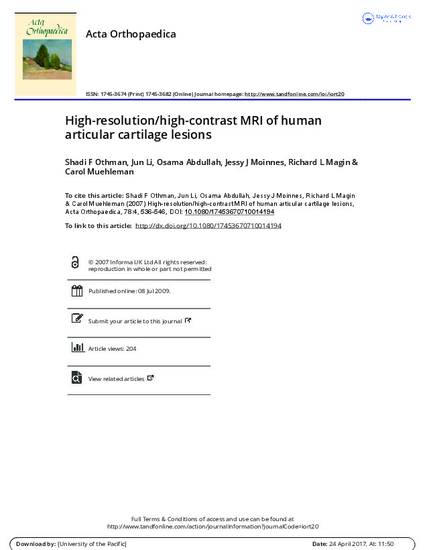
BACKGROUND: Magnetic resonance microscopy (MRM) is an important experimental tool in the identification of early cartilage lesions.
METHODS: Normal and degenerated cartilage samples were imaged at 11.74 T using a standard spin echo sequence. Quantitative MR measurements for T1, T2, and ADC were obtained and mapping for T2 and ADC was performed. The bi-exponential model for T2 relaxation was also explored. Histology was carried out for comparison with MR images.
RESULTS: MR images of cartilage samples displaying early stages of degeneration were positively correlated to their histological appearance in 23-microm high-resolution images and also with much shorter imaging times at 47-microm resolution. T2 maps enable delineation of the actual cartilage zones, distinguishing the superficial zone in particular. The bi-exponential model can reflect cartilage components at different stages of degeneration.
INTERPRETATION: At 11.74 T, with 23-microm resolution or with 47-microm resolution and shorter imaging times, MRM provides images that allow visualization of early stages of cartilage degeneration, including superficial fibrillation. This has not been shown previously. The images also allow quantitative measurements (T1, T2, and ADC) in each cartilage region, which can be indicative of different stages of cartilage degeneration.
